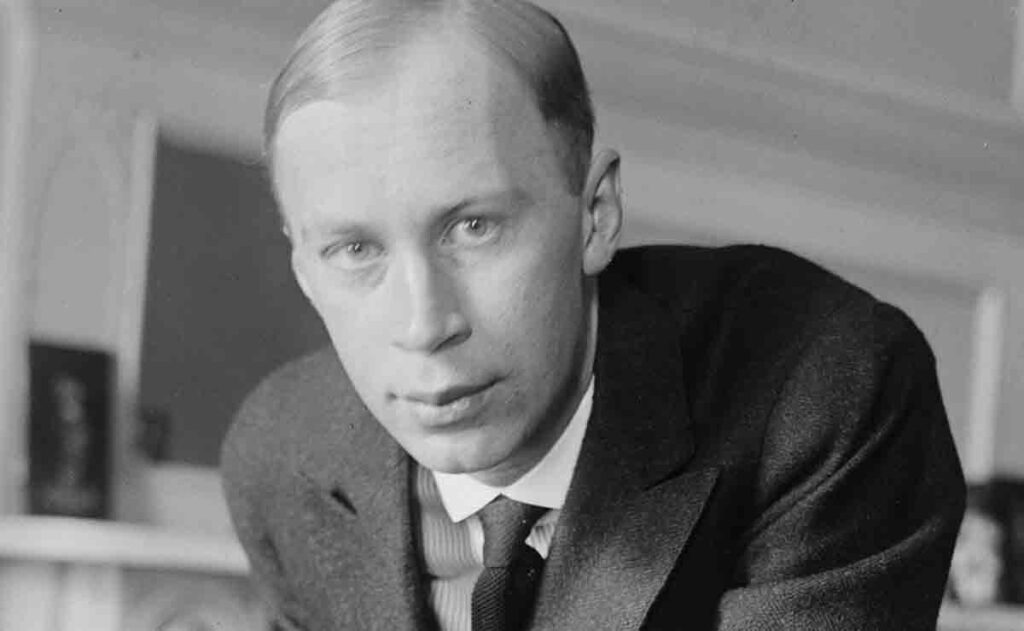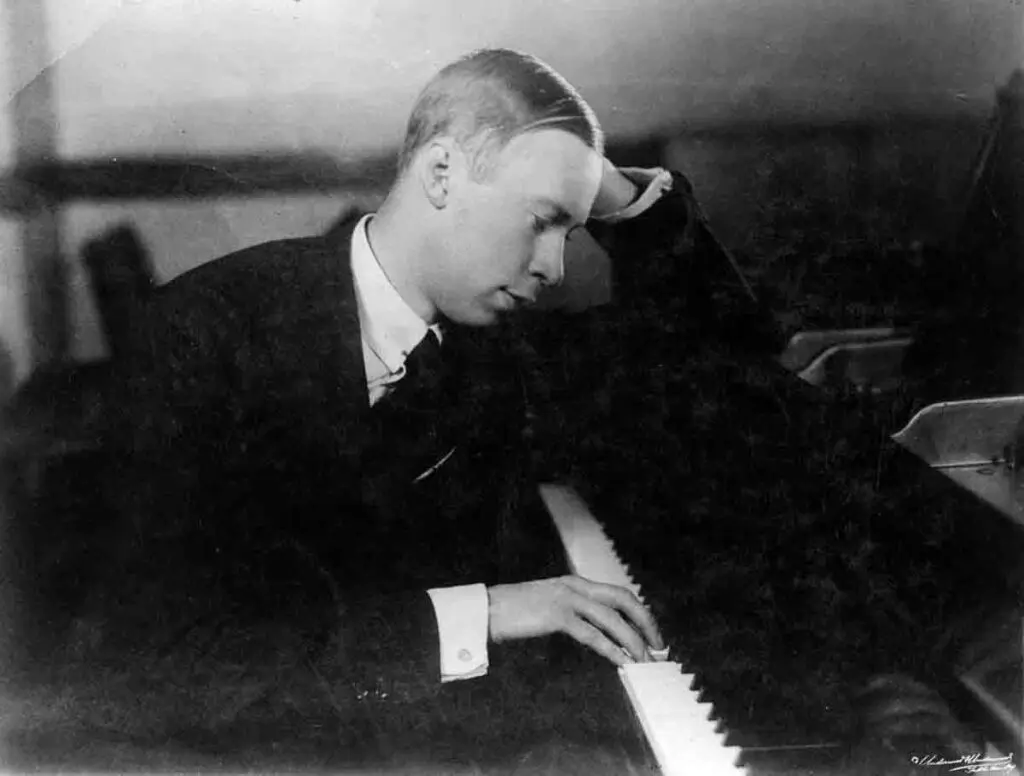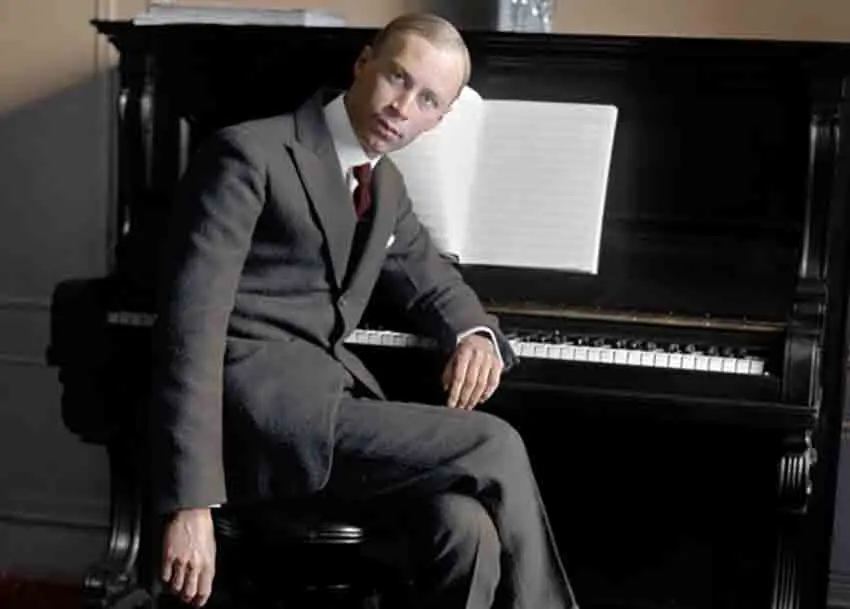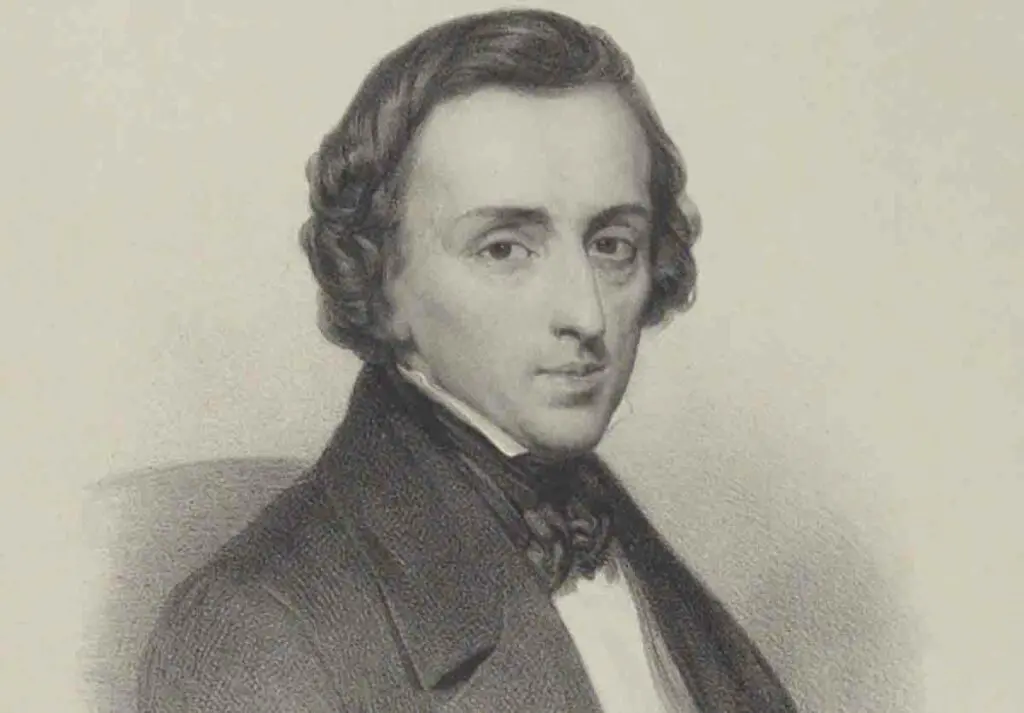The famous composer, musician and conductor Sergei Prokofiev made a significant contribution to the development of classical music. The maestro's compositions are included in the list of world-class masterpieces. His work was noted at the highest level. During the years of active creative activity, Prokofiev was awarded six Stalin Prizes.

The childhood and youth of the composer Sergei Prokofiev
The maestro was born in the small village of Krasne, in the Donetsk region. Sergei Sergeevich was brought up in a primordially intelligent family. The head of the family was a scientist. My father was a hard worker in agriculture. Mom devoted herself to raising children. She read well, knew musical notation and spoke several foreign languages. It was she who motivated little Seryozha to make music.
Sergei sat down at the piano at the age of 5. He easily mastered the game on this musical instrument. But most importantly, he took up writing small plays. The mother, who did not have a soul in her son, diligently wrote down the plays in a special notebook. By the age of 10, Prokofiev had written a dozen plays, even several operas.
Parents understood that a little genius was growing in their house. They developed the child's musical talent and soon hired a professional teacher, Reinhold Gliere. As a teenager, he left his father's house and moved to St. Petersburg. In the cultural capital of Russia, Seryozha entered the prestigious conservatory. He graduated from an educational institution in three directions at once.
After the revolution, Sergei Sergeevich realized that it no longer made sense to remain on the territory of Russia. Prokofiev decided to leave the country and move to live in Japan, and from there he emigrated to the United States of America.
Prokofiev was engaged in concert activity as a student at the St. Petersburg Conservatory. After moving to America, he continued to develop as a composer and musician. His impromptu speeches were held on a large scale.
In the mid-1930s of the last century, the maestro decided to return to the USSR. From that moment on, he finally settled in Moscow. Naturally, the musician did not forget to tour in foreign countries, but he chose Russia for his permanent residence.

The creative activity of the composer Sergei Prokofiev
Prokofiev established himself as an innovator of the musical language. The compositions of Sergei Sergeevich were not perceived by everyone. A striking example is the presentation of the composition "Scythian Suite". When the work sounded, the audience (most) got up and left the hall. The "Scythian Suite", like an element, spread to all corners of the hall. For music lovers of that time, this phenomenon was a novelty.
He achieved a similar result thanks to a mix of complex polyphony. The above words perfectly convey the operas "Love for Three Oranges" and "Fiery Angel". In the 1930s of the last century, Prokofiev had no equal.
Over time, Prokofiev drew the right conclusions. His compositions have acquired a calmer and warmer musical tone. He added romanticism and lyrics to classical modern. Such a musical experiment allowed Prokofiev to create works that were included in the list of world classics. The operas Romeo and Juliet and Betrothal in a Monastery deserved considerable attention.
In Prokofiev's biography, one cannot but mention the brilliant symphony "Peter and the Wolf", which the maestro wrote specifically for the children's theater. The symphony "Peter and the Wolf", as well as "Cinderella" are the composer's calling cards. The presented compositions are considered the pinnacle of his work.
Prokofiev created musical accompaniment for the films "Alexander Nevsky" and "Ivan the Terrible". Thus, he wanted to prove to himself that he could create in other genres.
Creativity Prokofiev is also valuable for the foreign public. Music lovers say that Sergei Sergeevich managed to open the curtain of the real Russian soul. The melodies of the maestro were used by the singer Sting and the popular director Woody Allen.
Details of privacy
During a tour of European countries, Prokofiev met the pretty Spaniard Carolina Codina. During the acquaintance, it turned out that Carolina was the daughter of Russian emigrants.
Sergei liked Codina at first sight, and he proposed to the girl. The lovers got married, and the woman bore the man two sons - Oleg and Svyatoslav. When Prokofiev announced his intention to return to Russia, his wife supported him and moved with him.

When the Great Patriotic War began in the country, the maestro sent his relatives to Spain, and he continued to live in the capital of Russia. This was the last meeting between Karolina and Sergei. They never saw each other again. The fact is that Prokofiev fell in love with Maria Cecilia Mendelssohn. Interestingly, the girl was suitable for the composer as a daughter and was 24 years younger than him.
The maestro announced that he intended to divorce his official wife, but Carolina refused Sergey. The fact is that marriage to a popular person for her was a lifeline that protected the woman from arrest.
In the late 1940s, the marriage of Prokofiev and Karolina was declared invalid by the authorities. Sergei Sergeevich married Mendelssohn. But Carolina was waiting for arrest. The woman was sent to the Mordovian Islands. After mass rehabilitation, she hurried back to London.
Prokofiev had another serious hobby. The man loved to play chess. And he did it professionally. In addition, the composer read a lot and adored the literature of recognized classics.
Interesting facts about the composer Sergei Prokofiev
- As a child, Prokofiev's mother introduced her son to the compositions of Beethoven and Chopin.
- One of Prokofiev's most popular works is the opera "War and Peace".
- Sergei Sergeevich had a difficult relationship with the authorities. In the 1940s, some of the composer's musical compositions were blacklisted because they did not correspond to the ideologies of the Soviet era.
- Prokofiev was called "Mozart of the XNUMXth century".
- The maestro's first performance in Paris was unsuccessful. Critics "smashed" his performance, calling it a "steel trance".
- Another interesting fact was connected with the death of the maestro. The fact is that he passed away on the same day as Stalin. For fans, the death of the musician was practically without a trace, since attention was drawn to the famous "leader".
The last years of the composer's life
By the end of the 1940s of the last century, Prokofiev's health deteriorated. He practically did not leave his country house. He continued to make music, even when he was not feeling well. The maestro spent the winter in his communal apartment. The brilliant composer died on March 5, 1953. He survived another hypertensive crisis. His body was laid to rest at the Novodevichy cemetery.



